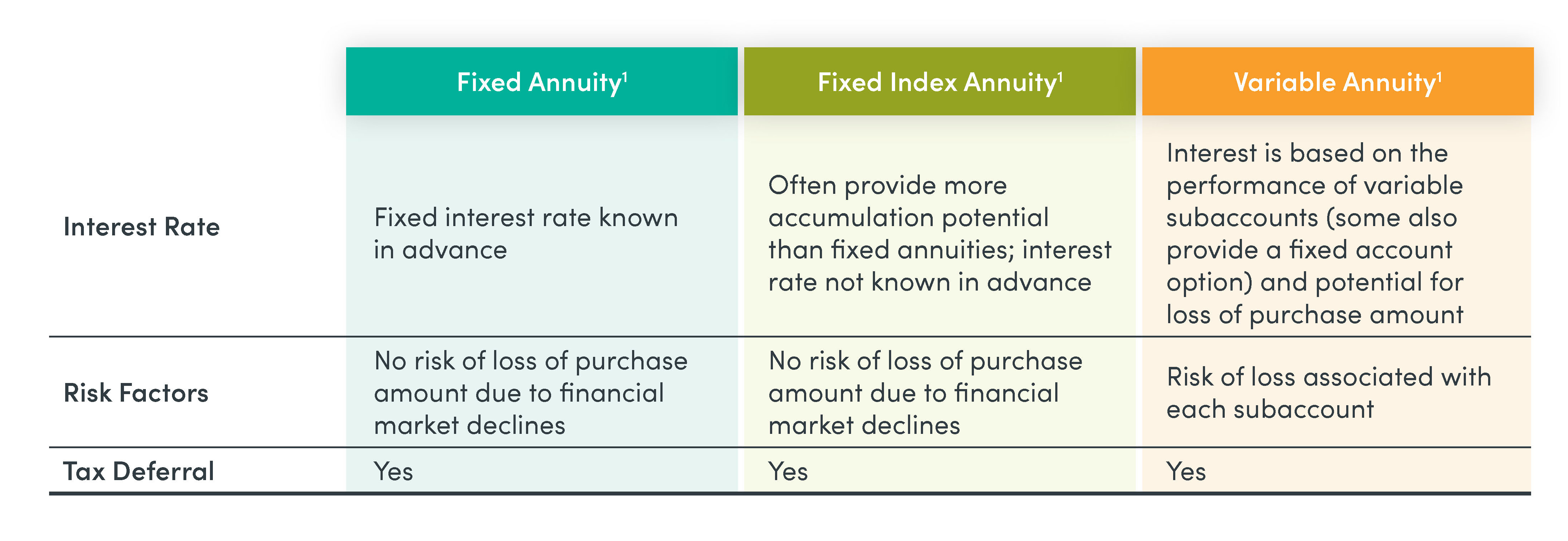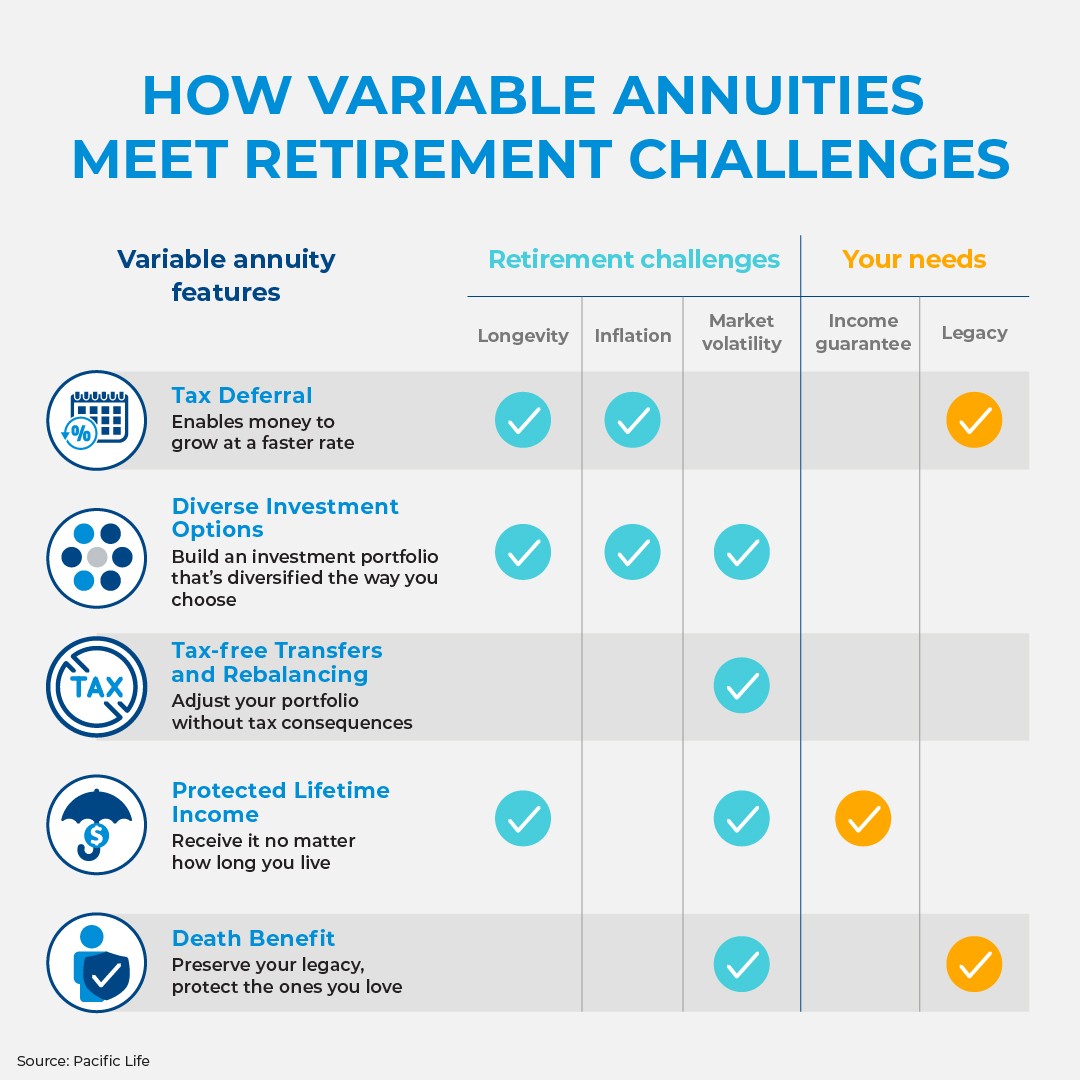All Categories
Featured
Table of Contents
The repayment may be spent for development for a lengthy duration of timea single costs deferred annuityor invested momentarily, after which payment beginsa solitary costs immediate annuity. Solitary premium annuities are often funded by rollovers or from the sale of an appreciated property. An adaptable premium annuity is an annuity that is meant to be funded by a series of repayments.
Proprietors of repaired annuities know at the time of their acquisition what the worth of the future cash flows will certainly be that are generated by the annuity. Obviously, the variety of capital can not be understood ahead of time (as this relies on the contract owner's life-span), but the guaranteed, fixed rates of interest a minimum of offers the owner some degree of certainty of future revenue from the annuity.
While this difference appears easy and simple, it can dramatically affect the value that an agreement proprietor inevitably originates from his/her annuity, and it develops substantial unpredictability for the contract owner - Annuity payout options. It likewise typically has a material effect on the degree of fees that a contract proprietor pays to the releasing insurance policy business
Fixed annuities are usually made use of by older capitalists that have limited properties however who wish to counter the risk of outlasting their possessions. Fixed annuities can offer as an efficient tool for this objective, though not without particular drawbacks. For instance, when it comes to prompt annuities, once an agreement has actually been purchased, the contract owner relinquishes any type of and all control over the annuity assets.
Analyzing Strategic Retirement Planning Key Insights on Your Financial Future Defining the Right Financial Strategy Advantages and Disadvantages of Different Retirement Plans Why Choosing the Right Financial Strategy Matters for Retirement Planning How to Compare Different Investment Plans: A Complete Overview Key Differences Between Different Financial Strategies Understanding the Rewards of Long-Term Investments Who Should Consider Annuity Fixed Vs Variable? Tips for Choosing Fixed Annuity Vs Variable Annuity FAQs About Tax Benefits Of Fixed Vs Variable Annuities Common Mistakes to Avoid When Planning Your Retirement Financial Planning Simplified: Understanding Fixed Vs Variable Annuity Pros Cons A Beginner’s Guide to Fixed Vs Variable Annuity Pros Cons A Closer Look at Immediate Fixed Annuity Vs Variable Annuity
For instance, an agreement with a common 10-year abandonment duration would certainly charge a 10% surrender fee if the agreement was surrendered in the very first year, a 9% abandonment fee in the 2nd year, and so forth till the abandonment charge reaches 0% in the contract's 11th year. Some deferred annuity agreements consist of language that permits small withdrawals to be made at various periods throughout the abandonment period scot-free, though these allowances usually come at a price in the type of reduced guaranteed rate of interest.
Simply as with a taken care of annuity, the proprietor of a variable annuity pays an insurance coverage firm a round figure or series of repayments in exchange for the pledge of a collection of future settlements in return. As pointed out above, while a repaired annuity expands at an ensured, constant rate, a variable annuity expands at a variable rate that depends upon the performance of the underlying financial investments, called sub-accounts.
During the buildup phase, properties purchased variable annuity sub-accounts grow on a tax-deferred basis and are taxed only when the agreement owner takes out those profits from the account. After the accumulation stage comes the earnings phase. Over time, variable annuity possessions must theoretically raise in value up until the agreement owner decides she or he wish to begin taking out money from the account.
The most substantial concern that variable annuities usually present is high expense. Variable annuities have several layers of costs and costs that can, in aggregate, develop a drag of up to 3-4% of the agreement's value each year.
M&E cost costs are calculated as a percentage of the agreement value Annuity issuers pass on recordkeeping and other administrative expenses to the contract owner. This can be in the type of a flat yearly charge or a portion of the contract worth. Administrative costs may be included as component of the M&E danger charge or may be analyzed individually.
These fees can range from 0.1% for passive funds to 1.5% or even more for proactively managed funds. Annuity contracts can be customized in a variety of ways to serve the details needs of the agreement proprietor. Some usual variable annuity riders include ensured minimum buildup advantage (GMAB), guaranteed minimum withdrawal advantage (GMWB), and ensured minimum revenue advantage (GMIB).
Understanding What Is A Variable Annuity Vs A Fixed Annuity Key Insights on Your Financial Future Defining Fixed Interest Annuity Vs Variable Investment Annuity Pros and Cons of Deferred Annuity Vs Variable Annuity Why Choosing the Right Financial Strategy Is a Smart Choice Variable Annuities Vs Fixed Annuities: Simplified Key Differences Between Pros And Cons Of Fixed Annuity And Variable Annuity Understanding the Risks of Long-Term Investments Who Should Consider Strategic Financial Planning? Tips for Choosing Fixed Vs Variable Annuity FAQs About Annuities Fixed Vs Variable Common Mistakes to Avoid When Choosing a Financial Strategy Financial Planning Simplified: Understanding Your Options A Beginner’s Guide to Fixed Indexed Annuity Vs Market-variable Annuity A Closer Look at Variable Vs Fixed Annuities
Variable annuity contributions supply no such tax obligation reduction. Variable annuities tend to be extremely inefficient vehicles for passing riches to the next generation due to the fact that they do not delight in a cost-basis adjustment when the original contract owner dies. When the proprietor of a taxable financial investment account passes away, the price bases of the financial investments held in the account are gotten used to mirror the market prices of those financial investments at the time of the proprietor's death.
For that reason, beneficiaries can inherit a taxed financial investment portfolio with a "fresh start" from a tax obligation perspective. Such is not the instance with variable annuities. Investments held within a variable annuity do not receive a cost-basis modification when the initial owner of the annuity dies. This means that any type of accumulated unrealized gains will certainly be passed on to the annuity owner's heirs, along with the connected tax obligation concern.

One substantial problem related to variable annuities is the potential for conflicts of rate of interest that may feed on the part of annuity salesmen. Unlike a monetary advisor, who has a fiduciary duty to make investment choices that benefit the client, an insurance broker has no such fiduciary obligation. Annuity sales are very rewarding for the insurance policy experts who sell them since of high in advance sales commissions.
Many variable annuity contracts include language which places a cap on the percentage of gain that can be experienced by specific sub-accounts. These caps protect against the annuity owner from fully participating in a section of gains that can otherwise be appreciated in years in which markets create substantial returns. From an outsider's viewpoint, presumably that financiers are trading a cap on financial investment returns for the previously mentioned assured flooring on financial investment returns.
Exploring the Basics of Retirement Options Key Insights on Your Financial Future Defining Immediate Fixed Annuity Vs Variable Annuity Features of Immediate Fixed Annuity Vs Variable Annuity Why Choosing the Right Financial Strategy Is a Smart Choice Fixed Index Annuity Vs Variable Annuities: Simplified Key Differences Between Different Financial Strategies Understanding the Key Features of Long-Term Investments Who Should Consider Strategic Financial Planning? Tips for Choosing the Best Investment Strategy FAQs About Planning Your Financial Future Common Mistakes to Avoid When Planning Your Retirement Financial Planning Simplified: Understanding Annuities Fixed Vs Variable A Beginner’s Guide to Smart Investment Decisions A Closer Look at Variable Vs Fixed Annuities
As kept in mind above, surrender charges can significantly limit an annuity owner's ability to relocate assets out of an annuity in the very early years of the agreement. Additionally, while a lot of variable annuities enable contract owners to withdraw a specified amount during the build-up phase, withdrawals yet quantity commonly result in a company-imposed charge.
Withdrawals made from a set passion rate investment alternative can also experience a "market price adjustment" or MVA. An MVA changes the worth of the withdrawal to show any kind of changes in rate of interest from the moment that the cash was invested in the fixed-rate choice to the moment that it was withdrawn.

Frequently, even the salesmen that offer them do not fully understand just how they function, therefore salesmen in some cases take advantage of a buyer's feelings to offer variable annuities instead than the benefits and suitability of the products themselves. We think that financiers must totally recognize what they own and just how much they are paying to have it.
The same can not be stated for variable annuity assets held in fixed-rate financial investments. These assets lawfully come from the insurance provider and would certainly as a result go to risk if the firm were to fail. Any assurances that the insurance firm has agreed to give, such as an assured minimum earnings benefit, would be in question in the occasion of a company failing.
Highlighting Fixed Annuity Vs Variable Annuity A Closer Look at How Retirement Planning Works Defining Fixed Index Annuity Vs Variable Annuities Features of Variable Annuities Vs Fixed Annuities Why Fixed Interest Annuity Vs Variable Investment Annuity Matters for Retirement Planning How to Compare Different Investment Plans: A Complete Overview Key Differences Between Different Financial Strategies Understanding the Risks of Variable Annuity Vs Fixed Indexed Annuity Who Should Consider Strategic Financial Planning? Tips for Choosing Annuities Fixed Vs Variable FAQs About Planning Your Financial Future Common Mistakes to Avoid When Choosing Fixed Annuity Vs Equity-linked Variable Annuity Financial Planning Simplified: Understanding Annuity Fixed Vs Variable A Beginner’s Guide to Fixed Vs Variable Annuities A Closer Look at Variable Annuity Vs Fixed Indexed Annuity
Potential purchasers of variable annuities should understand and consider the monetary problem of the releasing insurance business before entering into an annuity contract. While the benefits and downsides of various kinds of annuities can be discussed, the actual problem bordering annuities is that of viability.
Nevertheless, as the stating goes: "Buyer beware!" This write-up is prepared by Pekin Hardy Strauss, Inc. ("Pekin Hardy," dba Pekin Hardy Strauss Wealth Monitoring) for informative purposes just and is not meant as an offer or solicitation for organization. The info and data in this post does not comprise lawful, tax, audit, financial investment, or other specialist guidance.
Table of Contents
Latest Posts
Highlighting What Is Variable Annuity Vs Fixed Annuity Key Insights on Fixed Vs Variable Annuity What Is the Best Retirement Option? Pros and Cons of Various Financial Options Why Variable Vs Fixed An
Understanding Financial Strategies A Closer Look at Annuity Fixed Vs Variable Breaking Down the Basics of Investment Plans Advantages and Disadvantages of Fixed Indexed Annuity Vs Market-variable Annu
Breaking Down Fixed Annuity Vs Equity-linked Variable Annuity A Comprehensive Guide to Fixed Indexed Annuity Vs Market-variable Annuity What Is Annuity Fixed Vs Variable? Pros and Cons of Pros And Con
More
Latest Posts